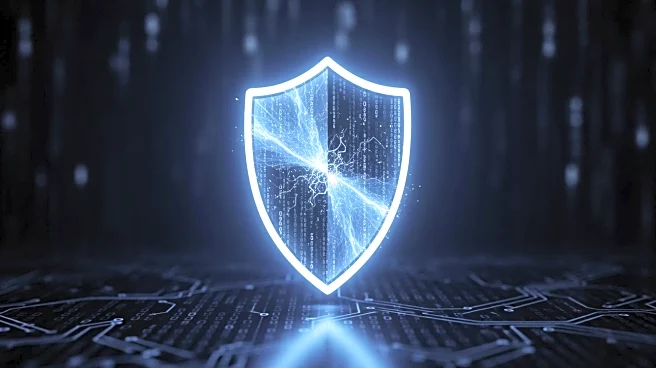What's Happening?
Recent reports indicate a significant increase in ransomware attacks during the third quarter of 2025, with 65% of these attacks attributed to the Akira, Qilin, and INC ransomware groups. According to Infosecurity
Magazine, there was an 11% rise in leak posts compared to the previous quarter. A Beazley Security report highlights that hacked VPN credentials were used in 48% of ransomware incidents, making them the most common initial access vector. This trend was particularly evident in Akira's campaign against SonicWall SSL VPN devices, exploiting weak security policies and the lack of multi-factor authentication. Additionally, zero-day advisories increased by 38%, with notable vulnerabilities in Citrix NetScaler, CrushFTP, and Microsoft SharePoint ToolShell, tracked as CVE-2025-7775, CVE-2025-54309, and CVE-2025-53770, respectively.
Why It's Important?
The surge in ransomware attacks poses a significant threat to businesses and organizations across the United States, highlighting vulnerabilities in cybersecurity infrastructure. The reliance on VPN credentials as a primary access vector underscores the need for improved security measures, such as multi-factor authentication and robust vulnerability management. The increase in zero-day advisories further complicates the cybersecurity landscape, requiring organizations to stay vigilant and proactive in their defense strategies. The economic impact of these attacks can be substantial, affecting operational continuity and leading to potential financial losses. As ransomware groups become more sophisticated, the pressure on cybersecurity professionals to develop effective countermeasures intensifies.
What's Next?
Organizations are advised to enhance their cybersecurity protocols by adopting multi-factor authentication and strengthening vulnerability management practices. The focus will likely shift towards developing more advanced detection and response systems to mitigate the risks associated with ransomware attacks. Cybersecurity firms may increase collaboration with government agencies to address the growing threat and develop comprehensive strategies to protect critical infrastructure. As the threat landscape evolves, continuous education and training for cybersecurity professionals will be crucial in maintaining a robust defense against emerging threats.












